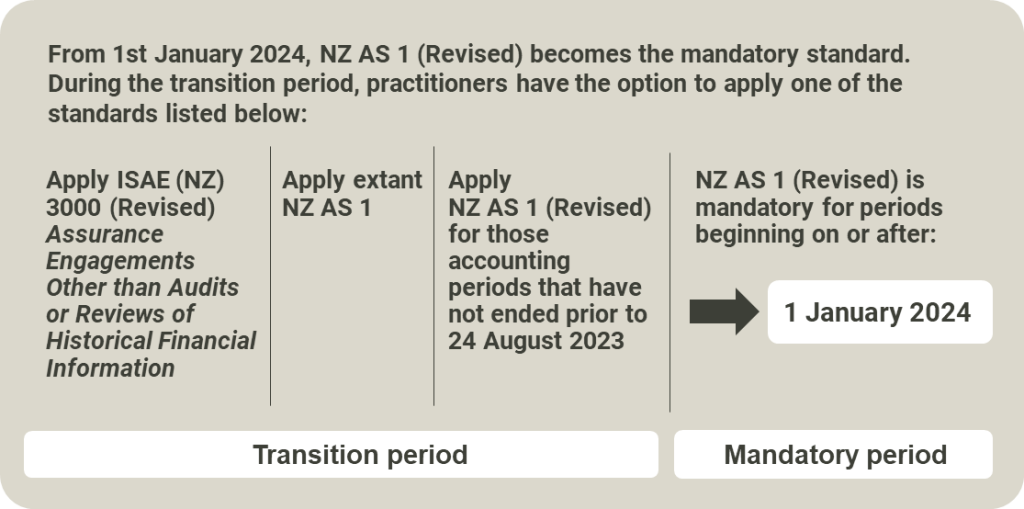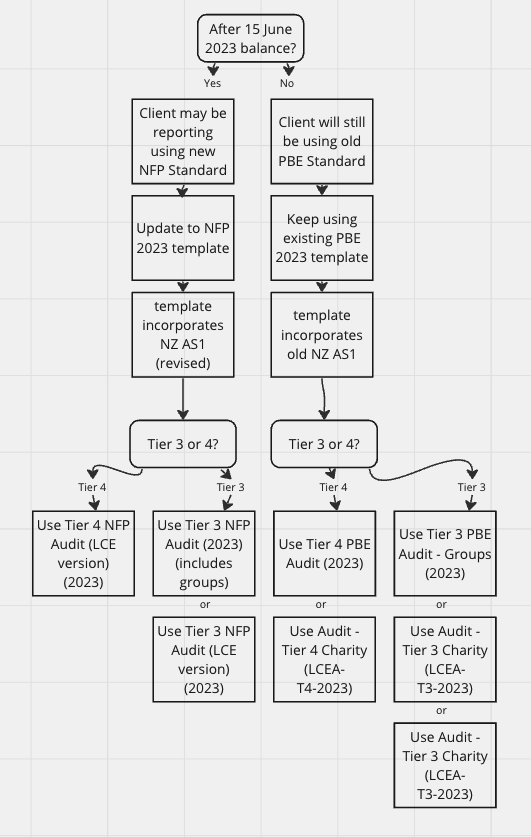31 October 2023
Many audit firms have their own internal policies and methodologies for setting materiality. However many of our smaller firms struggle with a consistent approach. What is best practice?
ISA 320 (para 2) describes materiality as follows:
“Misstatements, including omissions, are considered to be material if they, individually or in the aggregate, could reasonably be expected to influence the economic decisions of users taken on the basis of the financial statements.“
This implies that we identify who are the likely users of the financial statements. In the case of Not-for-Profits (NPFs) this is likely to be the members of the organisation, recipients of the services provided, and those who are likely to be external funders: grant providers and perhaps lending institutions.
What will users be concerned about in NFPs?
Certainly the ongoing viability of the entity, perhaps risks around income understatement or expense overstatement. Retention of value for assets will also be important. What will not be so important? Profit may indicate the ability to continue and grow, but it is not the primary reason the entity exists. So what parts of the financial statements will most influence the economic decisions of the users?
The important element is likely to be the costs of operating the entity. If the entity is able to deliver its services in a cost-effective and sustainable manner then stakeholders will continue to support it through their membership, grants, and other investments of time and funds.
What benchmark?
This emphasis on expenditure is reflected in how, in NZ, our four-tier NFP framework is measured – based on expenditure from the prior two years. So it makes sense to use this as our benchmark. Examples of benchmarks in ISA 320 (A5) include profit before tax, total revenue, gross profit and total expenses, and total equity or net asset value. Note that some firms use an average of the benchmark over the last three years to smooth out variations. This is worth considering if there are in fact such variations.
What about a new entity?
If the entity is new, and the first period is less than twelve months, can the auditor gross up the benchmark to twelve months for the calculation? No, because materiality applies to the particular financial statements being audited – regardless of the period length. Paragraph A7 is explicit about this.
What percentage should be applied to the benchmark?
ISA 320 (A4) states that “A percentage is often applied to a chosen benchmark as a starting point in determining materiality for the financial statements as a whole.”
This is where judgment must be applied. What percentage should we use? Commonly auditors choose between 0.5% and 3.0% of revenue or expenditure for overall materiality. However, the standard makes it clear that it is a matter of professional judgement and the auditor should not be confined to specific limits.
What is performance materiality?
Paragraph A13 tells us that “Performance materiality (which, as defined, is one or more amounts) is set to reduce to an appropriately low level the probability that the aggregate of uncorrected and undetected misstatements in the financial statements exceeds materiality for the financial statements as a whole.“
Some firms refer to this as giving materiality a “haircut.” The theory is that pure materiality is what would influence the economic decisions of the users, but what if we miss something close to materiality, or a combination of factors tips us over into materiality? So performance materiality (PM) gives us some headroom for this – providing a buffer between our theoretical critical value and working materiality so some slack is built in.
Typically firms use 75-80% of overall materiality, but the standard suggests that the auditor considers that this may be assessed on a class, balance and disclosure basis, as related to risk, previous experience, and our understanding of the entity. Commonly related parties will need to be considered with a lower PM given this disclosure is generally regarded as being qualitatively material.
How about relating to audit risk?
There is a relationship between materiality and the level of audit risk. Simply put, the higher the audit risk, the lower the materiality level that should be applied. When there is a higher risk we should be turning the magnitude of our microscope up to a higher level i.e. reducing materiality.
Risk can be different for different elements of the financial statements, so how can our materiality levels reflect this? We can do this by applying different performance materiality as above. This can also be achieved by using separate benchmarks.
For instance, an NPF has relatively low income and expenditure but high-value land and buildings. Risk is assessed as low for the assets as they do not change and are valued at cost, but expenditure has a higher risk profile. It may be appropriate to use 5% of fixed assets for those balances but 1% of expenditure for everything else.
Another method of recognising different levels of risk on different balances is applying confidence levels to testing. So for instance, the overall risk is set at 2% of expenditure, but when testing revenue and expenditure a confidence level of 0.5 is applied to reduce the sampling interval to half of PM, doubling the sample size. Conversely, a confidence level of 2.0 is applied to increase the sampling interval to twice PM to look at fewer items, because there is less perceived risk. Or we could create a combination of all of the above in a more complex job.
How is materiality applied?
There are three areas where materiality is applied as per paragraph A1.
Firstly, identifying and assessing risks of material misstatement. This involves what we look at in terms of risk. This ties into the discussion of inherent risk and control risk. We only need to consider risks that affect the financial statements, not all business risks. Then we don’t need to consider all classes, balances and disclosures, just those with a risk of material misstatement.
So when we are considering risk we should have materiality in mind. For instance, it was traditional to qualify for cash income, however with less use of cash this qualification may not be automatic. Yes, there is still a risk, but if cash receipts only. make up a tiny proportion of income, it is probably not material.
When identifying classes of transactions, a group of balances may be material in total, but not individually – for instance a series of grants. It makes sense to group these items and apply risk assessment to the group. By definition, all material balances or classes form a risk, so these should be identified and their risk profiles assessed. Even if they are low risk, if they are material they should be flagged and considered.
Don’t forget about balances or classes that are not presenting as material but have the potential to be material – understated accruals or creditors are the common examples.
Secondly, materiality is applied when determining the nature, timing and extent of further audit procedures. This is most likely to be applied when selecting a sample for testing. Again, the microscope metaphor works well. We look at a dataset through a microscope, but if that is set too low at 40x we may miss potentially material items. If it is set too high at 1000x we will be looking in too much detail – getting lost in the job and spending way too much time.
Some firms will consider all transactions over performance materiality, however, a better application of materiality to sampling is using a cumulative sampling tool with an interval based on performance materiality (adjusted for confidence level if required) to arrive at a sensible, statistically robust sample size for detailed substantive testing. Note too that the sampling interval may be adjusted if reliance is being placed on controls that have been tested, or on analytical procedures. These decisions should all be documented.
Thirdly, materiality is to be considered when evaluating the effect of misstatements on the financial statements and in forming the opinion in the auditor’s report. When we have done our testing and accumulated our audit adjustments and disclosure errors, we assess these for their materiality. If there are misstatements that the client will not adjust, then we use materiality to assess whether we need to modify our opinion in some way.
Summary – practical applications for small NFPs
Typically, in a small non-complex NFP, audit firms set an overall materiality based on expenditure and apply a materiality percentage of 2-3% unless there are serious pervasive risks. A PM of 80% is used in most cases. Then they apply PM to their substantive testing using it for their sampling interval, unless there are good reasons to adjust it – say if reliance is being placed on controls testing or analytical procedures. Balances that are already ‘proved in total’ should be excluded from this kind of sampling. So to summarise:
- Consider the users of the financial statements and what their motivations and interests are when setting materiality.
- Use expenditure as your main benchmark for materiality in NFPs.
- Consider benchmark averaging – including prior years – if there have been major changes.
- Using standard percentages of the benchmark is okay, but make sure you relate this to assessed risk.
- Use separate confidence levels or performance materiality to adjust testing when risk is assessed as lower or higher, or reliance is being placed on controls or analytical procedures.
- Don’t forget to document your decisions and your rationale for those decisions.
- Balances or classes that are material – or potentially material – represent risks, so make sure they are identified and addressed.
- Don’t over-audit by choosing materiality that is so low that nothing is being proven by your extra work.
- Don’t under-audit by setting materiality too high – or forgetting to apply it throughout the job – so that you miss important details.
- Document.
- Document.
- Document.



